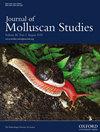一种本地物种促进了泰国城市陆地蜗牛的生物同质性
IF 1.2
4区 生物学
Q2 MARINE & FRESHWATER BIOLOGY
引用次数: 0
摘要
在欧洲和北美的城市陆地蜗牛群中,生物同质化或生物群日益相似的现象已被记录在案。造成生物同质化的原因是本地物种的减少和非本地物种的建立。气候会影响陆地蜗牛的分布,由于泰国(不包括南部半岛)的气候几乎一致,我们假设城市陆地蜗牛种群会表现出高度的分类同质性。我们在 2022 年雨季的 38 天内对 76 个地点(如庭院、寺庙、餐馆和酒店)进行了采样。这些地点包括三个地区:中部(五个省)、北部(两个省)和东北部(五个省)。对活蜗牛和蜗牛壳都进行了计数,计数的 10,470 个个体代表了 25 个分类群。生物同质性表现在三个类群占 69.9%。迄今为止,数量最多的物种是本地物种 Sarika siamensis,在所有 76 个地点均有发现,占所有个体的 50.4%。另外两个数量最多的物种是非本地物种--非洲大蜗牛 Lissachatina fulica(60 个地点)和 Allopeas gracile(50 个地点)--这两个物种都是广泛分布的同类物种。此外,还发现了其他三种非本地物种。在本地物种中,蛞蝓(包括半蛞蝓)分布广泛,但数量较少,而 Pupina sp.则在其原产地的 13 个高水位地点大量出现(平均 = 97 个/地点)。城市蜗牛群并不完全一致,北部地区的蜗牛群与中部和东北部地区的蜗牛群不同。总之,泰国的城市蜗牛群表现出高度的生物均质性,这在很大程度上归功于一个本地物种--暹罗蜗牛,表明本地同类物种可促进生物均质性。本文章由计算机程序翻译,如有差异,请以英文原文为准。
A native species contributes to biotic homogeneity of urban land snails in Thailand
Biotic homogenization or the increasing similarity of biota has been documented in urban land snail assemblages in Europe and North America. The resulting biotic homogeneity is caused by a loss of native species and the establishment of non-native species. Climate affects land snail distributions, and because Thailand (exclusive of the southern peninsula) has an almost uniform climate, we hypothesized that urban land snail populations would show a high degree of taxonomic homogeneity. We sampled 76 sites (e.g. yards, temple grounds, restaurants and hotels) over a 38-day period during the rainy season in 2022. These sites included three regions: central (five provinces), north (two provinces) and northeast (five provinces). Both live snails and shells were counted, and the 10,470 counted individuals represented 25 taxa. Biotic homogeneity was indicated by three taxa comprising 69.9% of individuals. By far the most abundant species was the native species Sarika siamensis, which was found at all 76 sites and comprised 50.4% of all individuals. The other two abundant species were non-native species—the giant African snail Lissachatina fulica (60 sites) and Allopeas gracile (50 sites)—both widespread synanthropic species. Three other non-native species were also found. Among native species, slugs, including semislugs, were widespread but occurred in low numbers, and Pupina sp. occurred in high abundance (mean = 97 individuals/site) at 13 highly watered locations within its native range. Urban snail assemblages were not entirely homogeneous, as assemblages in the north region differed from those in the central and northeast regions. In conclusion, urban snail assemblages in Thailand showed a high degree of biotic homogeneity, in large part due to a native species, S. siamensis, indicating that native synanthropic species can contribute to biotic homogeneity.
求助全文
通过发布文献求助,成功后即可免费获取论文全文。
去求助
来源期刊

Journal of Molluscan Studies
生物-动物学
CiteScore
3.00
自引率
8.30%
发文量
36
审稿时长
3 months
期刊介绍:
The Journal of Molluscan Studies accepts papers on all aspects of the study of molluscs. These include systematics, molecular genetics, palaeontology, ecology, evolution, and physiology. Where the topic is in a specialized field (e.g. parasitology, neurobiology, biochemistry, molecular biology), submissions will still be accepted as long as the mollusc is the principal focus of the study, and not incidental or simply a convenient experimental animal. Papers with a focus on fisheries biology, aquaculture, and control of molluscan pests will be accepted only if they include significant advances in molluscan biology. While systematic papers are encouraged, descriptions of single new taxa will only be considered if they include some ‘added value’, for example in the form of new information on anatomy or distribution, or if they are presented in the context of a systematic revision or phylogenetic analysis of the group.
 求助内容:
求助内容: 应助结果提醒方式:
应助结果提醒方式:


